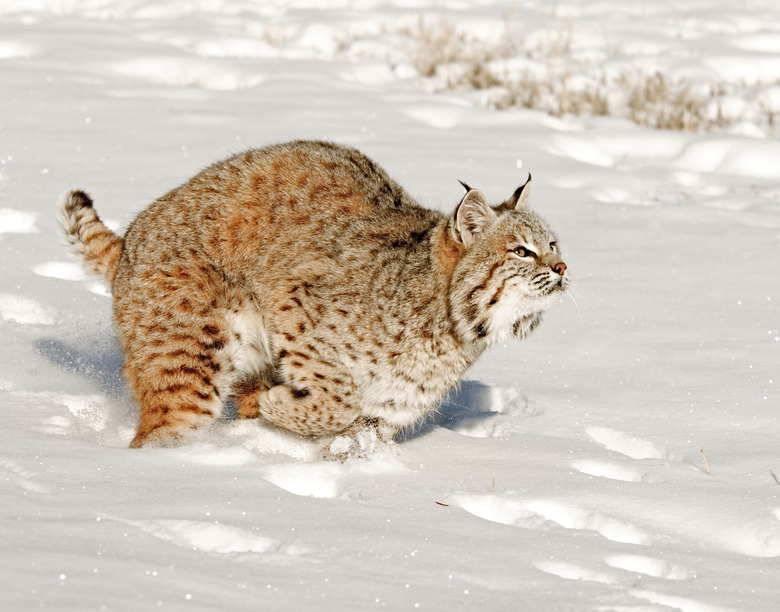Examples Of Density Dependent Factors
In nature, limiting factors affecting population sizes include how much food and/or shelter is available, as well as other density-dependent factors. Density-dependent factors are not relevant to populations that are below "carrying capacity," (i.e., how much life a habitat can support) but they start to have to become noticeable as populations reach and exceed that limit. The degree of control imposed by a density-dependent factor correlates to population size such that the effect of the limitation will be more pronounced as population increases. Density-dependent factors include competition, predation, parasitism and disease.
Competition
Competition
Habitats are limited by space and resource availability, and can only support up to a certain number of organisms before reaching their carrying capacity. Once a population exceeds that capacity, organisms must struggle against one another to obtain scarce resources. Competition in natural populations can take many forms. Animal communities compete for food and water sources whereas plant communities compete for soil nutrients and access to sunlight. Animals also vie for space in which to nest, roost, hibernate, or raise young, as well as for mating rights.
Predation
Predation
Many populations are limited by predation; predator and prey populations tend to cycle together, with the predator population lagging somewhat behind the prey population. The classic examples of this are the hare and the lynx: as the hare population increases, the lynx has more to eat and so the lynx population can increase. The increased lynx population results in more predatory pressure on the hare population, which then declines. The drop in food availability in turn causes a drop in the predator population. Thus, both of these populations are influenced by predation as a density-dependent factor.
Parasitism
Parasitism
When organisms are densely populated, they can easily transmit internal and external parasites to one another through contact with skin and bodily fluids. Parasites thrive in densely packed host populations, but if the parasite is too virulent then it will begin to decimate the host population. A decline in the host population will in turn reduce the parasite population because greater distance between host organisms will make transmission by more difficult.
Disease
Disease
Disease is spread quickly through densely packed populations due to how close organisms are to one another. Populations that rarely come into contact with one another are less likely to share bacteria, viruses and fungi. Much like the host-parasite relationship, it is beneficial to the disease not to kill off its host population because that makes it more difficult to for the disease to survive.
Cite This Article
MLA
Reid, Ari. "Examples Of Density Dependent Factors" sciencing.com, https://www.sciencing.com/examples-density-dependent-factors-5928598/. 13 March 2018.
APA
Reid, Ari. (2018, March 13). Examples Of Density Dependent Factors. sciencing.com. Retrieved from https://www.sciencing.com/examples-density-dependent-factors-5928598/
Chicago
Reid, Ari. Examples Of Density Dependent Factors last modified March 24, 2022. https://www.sciencing.com/examples-density-dependent-factors-5928598/
